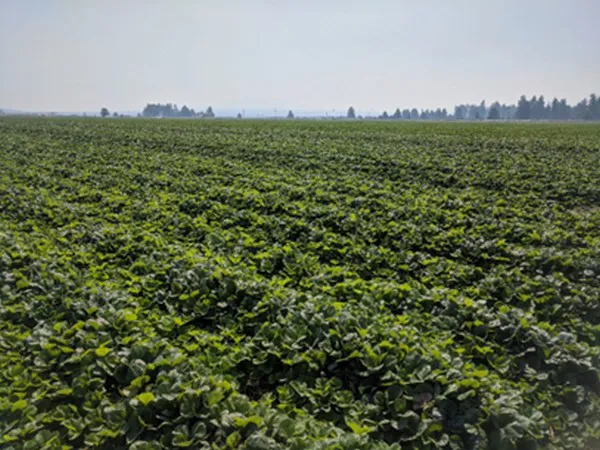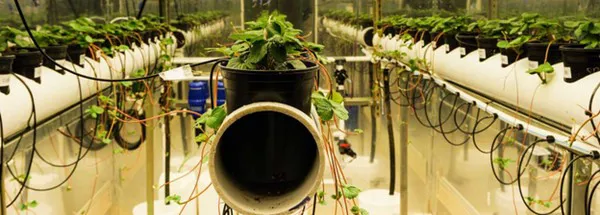The life of a strawberry plant in the US usually starts as a tiny plant from tissue culture. The plants then go through a series of propagation steps in multiple open-field nurseries. This multi-location and the multi-year process is a standard practice in North America. Open field nurseries (Figure 1) are fumigated with Methyl Bromide to eliminate multiple soil pests. Plants for fruit production are harvested as bare-root plants, sorted, trimmed, and then planted in either Mexico, California, Florida, Canada, or other regions in America. At this time, only a few very specialized operations in California, Canada, and limited locations in the US supply all of the strawberry plants for North American growers.
 Figure 1: A strawberry propagation field in Macdoel (Northern California) in August 2021.
Figure 1: A strawberry propagation field in Macdoel (Northern California) in August 2021.
New propagation tools that do not rely on Methyl Bromide and are not dependent on multiple years in the field could ensure that the US strawberry nursery industry remains viable in the future. Dr. Mark Hoffmann, strawberry production specialist at NCSU, leads a $5.3M USDA-NIFA SCRI-sponsored multi-state project (Development and integration of next-generation propagation strategies to increase the resilience of the US strawberry supply chain. Grant No.: 2021-51181-35857). The aim of this project is to develop strawberry propagation protocols in controlled environments (Figure 2). This 4-year project started in November 2021 and consists of 19 scientists at 12 universities across the country. The scientists are experts in their fields of controlled environments, plant physiology, genetics, plant breeding, economics, and production. Collectively the scientists are tasked with developing a faster and cleaner way of developing strawberry transplants in North America. An important component of this project is the collaboration with more than 20 industry partners in the US, Canada, and Europe.

Figure 1: A strawberry propagation field in Macdoel (Northern California) in August 2021.
This project is led by Dr. Mark Hoffmann (project director) and Drs. Ricardo Hernández and Gina Fernandez (co-directors of the project; Figure 3) at NCSU. Additional researchers are from the USDA-ARS Service in Ohio, Virginia Tech, Rutgers University, University of Maryland, The Ohio State University, Cornell University, University of Florida, Purdue University, UC Davis, UC ANR, and the strawberry center at Cal Poly San Luis Obispo.

Figure 3: The project director (PD) and Co project directors (Co-PDs) of the Strawberry Propagation SCRI project are all members of the Department of Horticultural Science at NCSU. From left to right: PD Dr. Mark Hoffmann (Assistant Professor and Small Fruits Extension Specialist); Co-PD Ricardo Hernández (Associate Professor and Controlled Environment Specialist); Co-PD Gina Fernandez (distinguished Professor and Strawberry Breeder).
For more information:
North Carolina State University
www.strawberries-pip.cals.ncsu.edu
